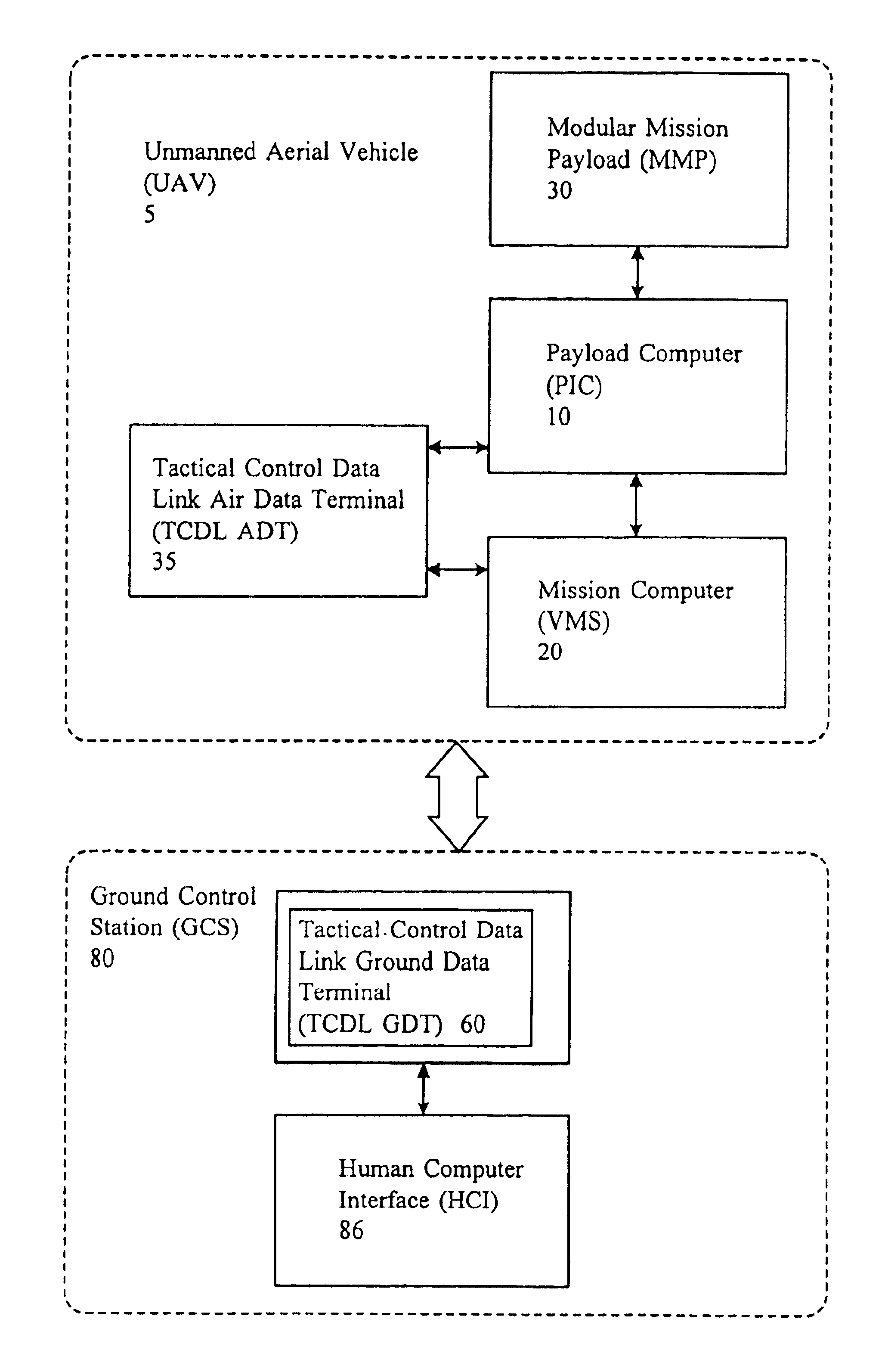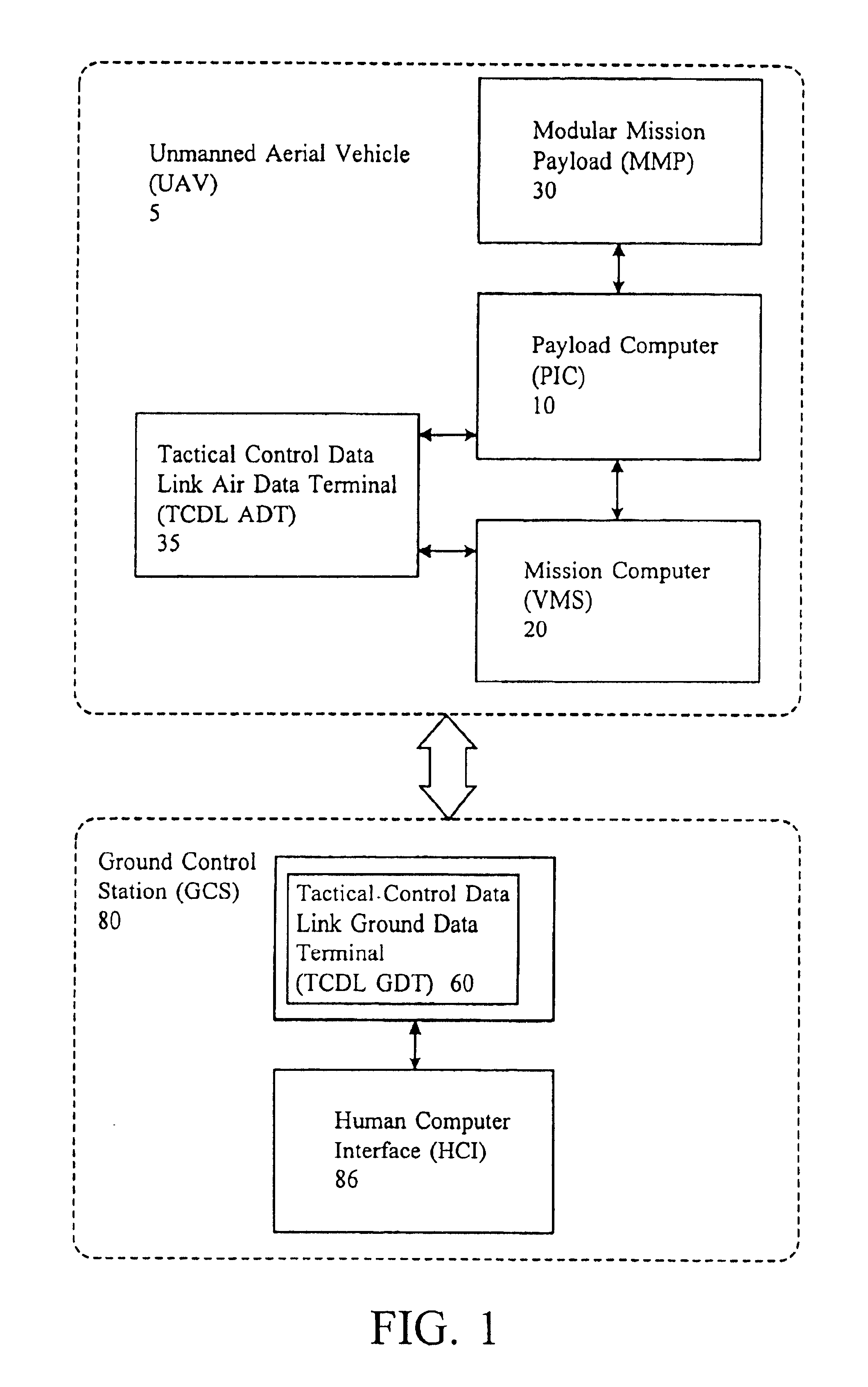Modular mission payload control software
a technology of payload control and module, which is applied in the direction of vehicle position/course/altitude control, process and machine control, instruments, etc., can solve the problems of more than 10 payloads, many wasted hours, and exceedingly difficult uv payload implementation, so as to minimize software changes and minimize software changes
- Summary
- Abstract
- Description
- Claims
- Application Information
AI Technical Summary
Benefits of technology
Problems solved by technology
Method used
Image
Examples
Embodiment Construction
The Modular Mission Payload Control Software (MMPCS) according to the present invention is incorporated in the system architecture set forth in co-pending U.S. patent application Ser. No. 10 / 012,613, which discloses a high-level restructuring of conventional payload communication systems as repeated below.
FIG. 1 is a conceptual block diagram illustrating the system architecture. An existing unmanned aerial vehicle 5 is equipped with an existing modular mission payload (MMP) 30 located in the aerial vehicle 5. In accordance with the present invention, the MMP 30 is connected by high-speed data bus to a dedicated payload interface controller (PIC) 10 that is also located in the aerial vehicle 5. Payload interface controller (PIC) 10 is a substantially conventional PC networked to the existing mission computer 20 that is also resident on the unmanned aerial vehicle 5. Both the mission computer 20 and payload interface controller (PIC) 10 are provided with a common communication interfa...
PUM
 Login to View More
Login to View More Abstract
Description
Claims
Application Information
 Login to View More
Login to View More - R&D
- Intellectual Property
- Life Sciences
- Materials
- Tech Scout
- Unparalleled Data Quality
- Higher Quality Content
- 60% Fewer Hallucinations
Browse by: Latest US Patents, China's latest patents, Technical Efficacy Thesaurus, Application Domain, Technology Topic, Popular Technical Reports.
© 2025 PatSnap. All rights reserved.Legal|Privacy policy|Modern Slavery Act Transparency Statement|Sitemap|About US| Contact US: help@patsnap.com



